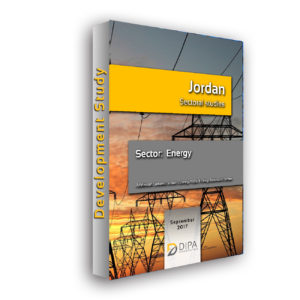 One of the smaller countries in the Middle East, Jordan is strategically important in a volatile region, having emerged relatively unscathed from the Arab Spring. A homogeneous country with a high proportion of Palestinians, Jordan has a relatively young population that has sharply increased in recent years, due to the influx of Syrian refugees. Jordan is a parliamentary constitutional monarchy, and King Abdullah II has ruled since 1999.
One of the smaller countries in the Middle East, Jordan is strategically important in a volatile region, having emerged relatively unscathed from the Arab Spring. A homogeneous country with a high proportion of Palestinians, Jordan has a relatively young population that has sharply increased in recent years, due to the influx of Syrian refugees. Jordan is a parliamentary constitutional monarchy, and King Abdullah II has ruled since 1999.
Jordan has a well-educated and skilled workforce, and a strong banking system. Its GDP increased by 2,38% during 2015 and reached a value of USD 37,52 billion. In spite of high youth unemployment and a large government budget deficit, compounded by the heavy refugee-burden, Jordan has managed to maintain a small but steady growth during the past 5 years. A predominantly importing country, Jordan is characterized by large trade deficits, with net trade in goods and services amounting to USD -8.4 billion in 2015. Inflation is estimated to remain low and stable at levels around 2%.
Considered a politically safe and stable country with untapped potential across many sectors, Jordan has a relatively progressive business environment. The World Bank ranked it 118 out of the 189 countries surveyed in its Doing Business 2017.
Jordan has long been fully reliant on energy imports to meet its rising domestic demand of energy. Although the country lacks the petroleum resources defining the economies of many countries in the region, the Jordanian energy industry has emerged as one of the most dynamic in the Middle East, focusing on renewables as the core element of the its future energy system. The development of renewable forms of energy, in addition to nuclear, will significantly boost domestic capacity and reduce Jordan’s fuel bill that has skyrocketed in recent years. This study is a part of the Development Study and analyses the energy sector.
1 Country Profile
1.1 History of Jordan
1.1.1 Pre-independence period
1.1.2 Contemporary period
1.1.3 Recent Developments
1.2 Geography
1.2.1 Area and Boundaries
1.2.2 Topography
1.2.3 Land Use and Water Resources
1.2.4 Environmental Concerns
1.3 People and Society
1.3.1 Population and National Identity
1.3.2 Demographics
1.3.3 Societal Characteristics
1.4 Government
1.4.1 Framework of Government
1.4.2 Executive Branch
1.4.3 Legislative Branch
1.4.4 Judicial Branch
1.4.5 Political Parties
1.5 Main Infrastructure
1.5.1 Transportation
1.5.2 Tele Communications
1.5.3 Energy
1.6 Key Industries and National Resources
2 Energy
2.1 Overview of Hydrocarbons: Consumption and Imports
2.2 Hydrocarbon Exploration
2.3 Renewables
2.4 Nuclear
2.5 Electricity
2.6 Competitive landscape
2.6.1 Key Players in Oil/Refined Petroleum Products, Natural Gas and Oil Shale Industries
2.6.2 Key Players in Electricity Industry
2.7 Challenges and prospects
3 Doing Business
3.1 Starting a Business
3.2 Dealing with Construction Permits
3.3 Getting Electricity
3.4 Registering Property
3.5 Getting Credit
3.6 Protecting Minority Investors
3.7 Paying Taxes
3.8 Trading across Borders
3.9 Enforcing Contracts
3.10 Resolving Insolvency
3.11 Measuring competitiveness by the World Economic Forum
3.12 Corruption Index
3.13 Public – Private Partnerships
